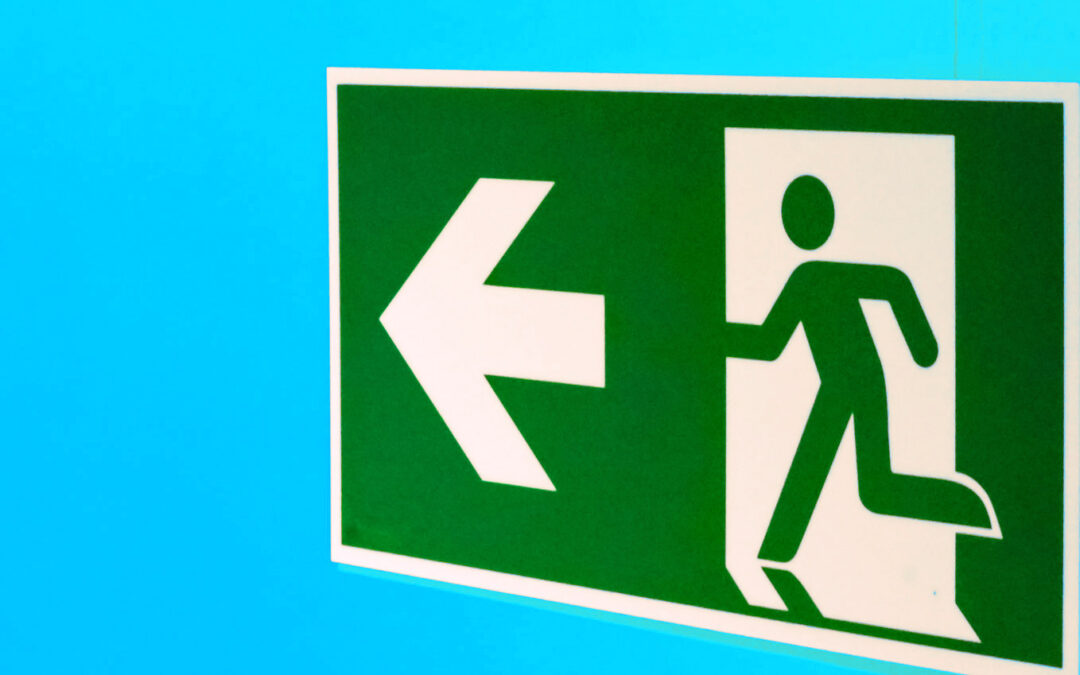From a very young age, we’re taught the basics of fire safety. Stop, drop, and roll. Never play with matches. Always know where the fire extinguisher is. But when you’re in charge of a building that sees hundreds of visitors and employees go through its doors every day, just knowing the basics of fire safety won’t cut it. So, here’s everything you’ve ever wanted to know about fire doors—the most important life-saving measure you may never have heard of.
What is a Fire Door?
- Fire doors are made from or fortified with fire-resistant materials. For example, a fire door might be a wooden door that’s lined with aluminum panels, or it might be a steel door that’s filled with a fire-resistant material, like gypsum.
- Fire doors are not fire-proof doors—all fire doors will end up burning eventually.
The point is to slow the spread of the fire, buying time for people to escape the building and for the fire department to arrive. - Fire doors are “fire rated” for a certain period of time—typically between 20 and 80 minutes.
Fire Door Regulations
Because lives are at stake, fire doors are subject to quite a few federal and local regulations, and the standards can vary based on the state or city in which your building is located. Here are a few examples of common protocol:
- Fire doors must close automatically during emergencies.
Fire doors can only contain a fire if they’re closed. And when a fire breaks out, you don’t want to waste precious time or put yourself in danger by running around closing all the doors. Fire doors are usually held open by a magnetic latch, which is triggered to release when the fire alarm goes off. This allows the fire doors to close on their own. - Fire doors need to unlock during emergencies.
While fire doors must close during emergencies to be effective, it’s important that they close in the unlocked position. That’s to make sure people can still escape when a fire breaks out. - Fire door modifications are restricted.
After a fire door is fire rated, you’re pretty limited to how and when you can modify the door. Any tweaks you make could undercut the door’s fire resistance. For example, drilling holes or installing windows is generally a “no-no.” - Fire doors need to have an inspection label.
In order to be official, fire doors need to pass an inspection that verifies they’re up to snuff. Once they’ve passed that inspection, they’re usually required to display a label that proves it.
ADA are Fire Door Experts
It’s important that your fire doors are up to code for two main reasons:
- When your fire doors are up to code, you’re helping to create a safe environment for the people in your building.
- Your fire doors need to meet certain standards to keep you in the good graces of the fire marshall, who can hit you with serious fines or even shut you down completely.
Here’s the good news: ADA’s ProActive Fire Inspection (PFI) is here to help.
ADA’s technicians have undergone rigorous and extensive training and are fully licensed to inspect your fire doors. And that license is issued by the National Fire Protection Association, which means our technicians have met the highest standards in the industry. As part of our PFI program, we’ll come out to take a detailed look, identify any issues, and make sure your fire doors are keeping your building as safe as possible.
After reading this article, you probably know a thing or two about fire doors. But it turns out that you need to know a lot more than just a thing or two. Contact us today to learn more about our PFI program and schedule a fire door inspection. We’ll get your doors squared away and do our part to keep the fire and smoke at bay.

